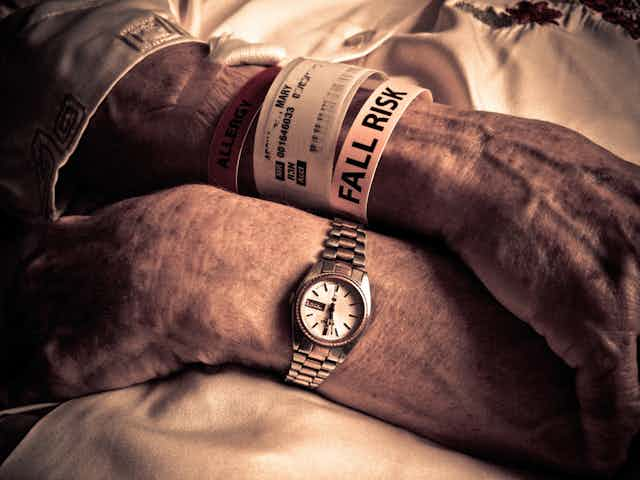The recent outbreak of Zika virus in South America has been a cause of concern. This is not because Zika itself is a serious condition, but because it is believed to be linked to birth defects when expectant mothers are infected, and to a rare but severe and progressive neurological disorder called Guillain-Barré syndrome.
The syndrome is triggered by an infection and can cause temporary or long-term paralysis. It is quite rare, occurring in approximately one in 100,000 people per year.
Guillain-Barré syndrome is not new. This is the 100-year anniversary of its description. The French researchers Giullain, Barré (and Strohl) first diagnosed Guillain-Barré syndrome in Paris.
A link between Zika and Guillain-Barré syndrome was first proposed in 2014 in French Polynesia. With the World Health Organisation reporting the “explosive spread” of Zika virus, there are concerns that Guillain-Barré syndrome levels may also increase.
In January 2016, El Salvador reported an increase in Guillain-Barré cases (46 in one month, which is around three times the average number of cases). This increase overlaps with high numbers of Zika infections (3,836 cases in one to two months).
It is important to note that it still has not been demonstrated that Zika infection actually causes Guillain-Barré syndrome. Further, even if all cases of Guillain-Barré syndrome reported in El Salvador were caused by Zika infection, only about one in 100 infected people develop Guillain-Barré syndrome. This ignores all of the cases due to other causes.
Causes
The exact cause of Guillain-Barré syndrome is still unclear, but it generally develops after a lung or gut infection and appears to be an autoimmune disease. This means that symptoms are caused by our own immune system attacking our body.
The initial infection can be caused by either bacteria or viruses, and a large number of infections have been linked to Guillain-Barré syndrome. The most commonly associated infections are the bacteria Campylobacter jejuni, cytomegalovirus and Epstein-Barr virus.
When we get an infection, our immune system will learn to fight off the invader. It does this by developing antibodies, which are molecules that can attach to the surface of the bacteria or virus. These antibodies attach to a specific pattern or shape on the surface of the bacteria or virus. When they are attached they act as a target that our immune cells will attack and kill.
In Guillain-Barré syndrome, our immune system makes a mistake – sometimes a similar pattern or shape to the one on the bacteria or virus is also on the surface of our nerve cells. When the antibodies attach to the surface of our nerve cells, they still act as a target. As a result, our immune cells then attack our own nerve cells.
Symptoms
The type and severity of symptoms vary greatly between individuals. This probably depends on the location and extent of nerve damage caused. They can range from mild numbness and weakness, to death.
Guillain-Barré syndrome causes rapid and progressive weakness in the arms and legs. This starts with mild symptoms, such as numbness in the hands and feet. It then spreads up the limbs and progresses to severe weakness and paralysis.
Symptoms generally reach full severity within four weeks. Around two-thirds of patients experience symptoms so severe they can no longer walk.
A high number of patients also experience pain, including backaches, muscle pain and headaches.
Of most concern, around 30% of patients develop respiratory problems that require life support. Up to 20% of these patients will die. A large proportion also experience problems with autonomic nervous system function (the part of the nervous system that controls organ function), which can cause heart problems.
Estimates of deaths caused by Guillain-Barré syndrome vary widely and rates depend on the quality of medical care. Around 5% of all Guillain-Barré patients die from the condition.
Most patients fully recover from the disease, although a proportion (around one-third after one year) continue to experience serious problems including permanent paralysis, long-term pain and fatigue.
Treatment
Patients often require hospitalisation to monitor symptoms and life support if severe paralysis develops.
While there is currently no cure for Guillain-Barré syndrome, two treatment options can reduce disease severity and speed up recovery. One is “plasma exchange”, where the liquid portion of the patient’s blood is replaced with donor plasma. Our antibodies are contained within this plasma, so this exchange effectively removes them from our blood.
The second is “intravenous immunoglobulin”, where large amounts of donor antibodies (also called immunoglobulins) are injected into the bloodstream. This process effectively dilutes out the bad antibodies that were causing damage, and reduces their effect. Both aim to reduce the effect of our antibodies and limit nerve damage.
Treatment is often complemented with supportive procedures to decrease symptoms. These include pain relief, physiotherapy to limit muscle loss and the negative effects of being bed-bound, and life support in the case of severe symptoms.

